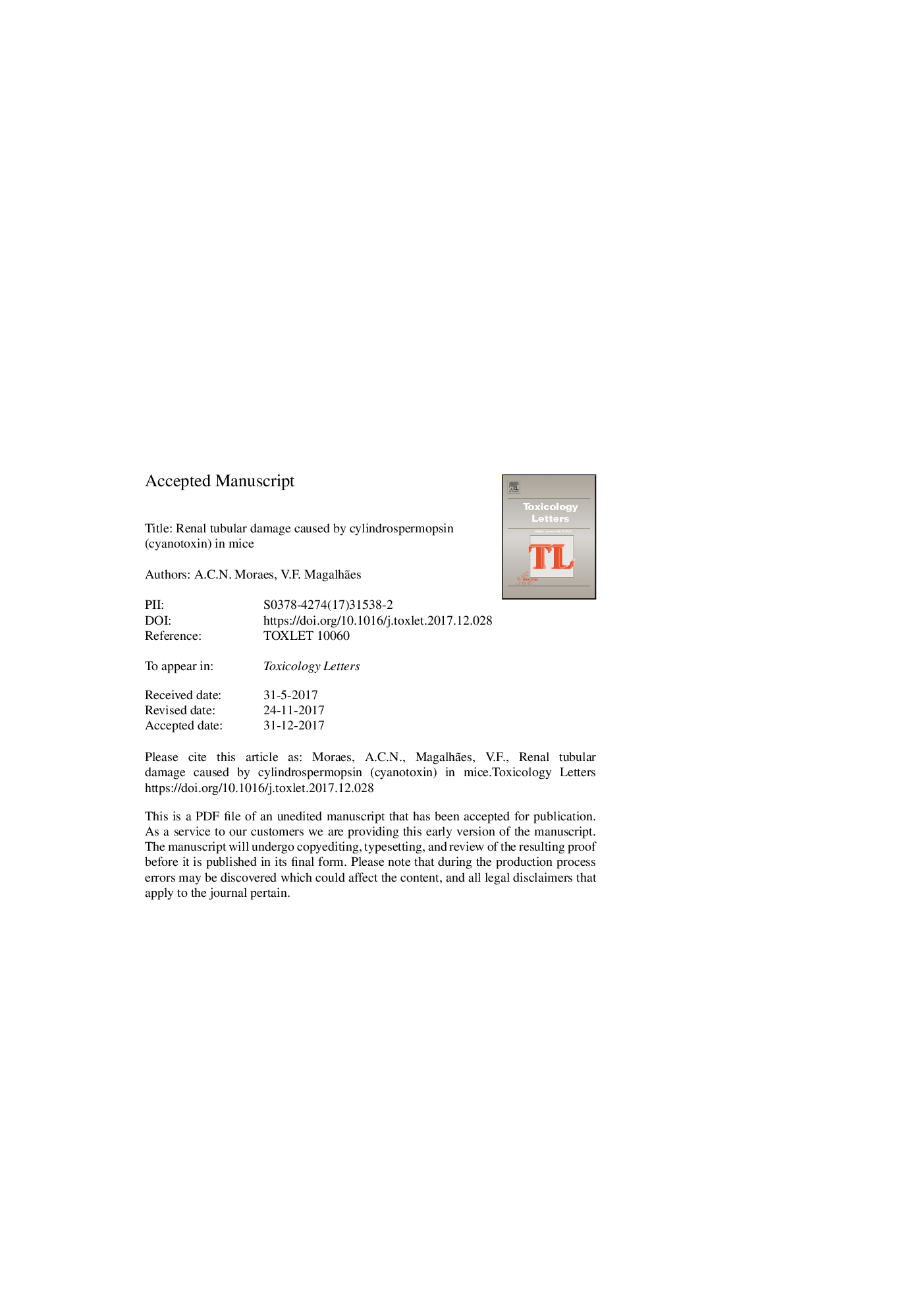| Article ID | Journal | Published Year | Pages | File Type |
|---|---|---|---|---|
| 8553411 | Toxicology Letters | 2018 | 35 Pages |
Abstract
Cylindrospermopsin (CYN) is a cyanotoxin and a hydrophilic alkaloid of 415â¯Da. The principal effect of CYN is the inhibition of protein synthesis, and it can damage various organs. Studies have demonstrated that the kidney is the most affected organ. CYN has played roles in at least two poisoning cases, i.e., the mysterious Palm Island disease in Australia and the event at Caruaru in Brazil. Therefore, we aimed to determine how CYN disrupts the renal tissue. Dose-response curves following single intraperitoneal injections of purified CYN (at 0, 16, 32, 64 and 128â¯Î¼g CYN/kg body weight) were created in 10-week-old male BALB/C mice (nâ¯=â¯4). Renal physiology parameters were analyzed after 7 and 14â¯days. However, no alterations in the glomerular filtration rate (GFR) or nephrin expression (a crucial protein for glomerular integrity) were observed. We detected low-molecular-weight proteinuria and increased excretions of the tubular enzymes lactate dehydrogenase (LDH) and gamma-glutamyl transferase (GGT) at doses of 16, 32 and 64â¯Î¼g CYN/kg body weight. Furthermore, we observed increases in the renal interstitial space and collagen deposition that indicated edema and fibrosis. The data seem to indicate that the damage is in the proximal tubule.
Related Topics
Life Sciences
Environmental Science
Health, Toxicology and Mutagenesis
Authors
A.C.N. Moraes, V.F. Magalhães,
